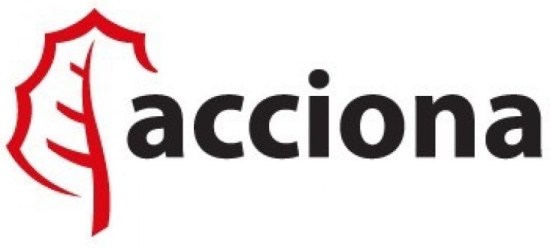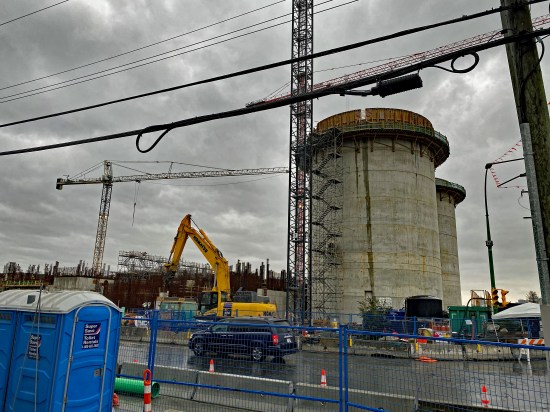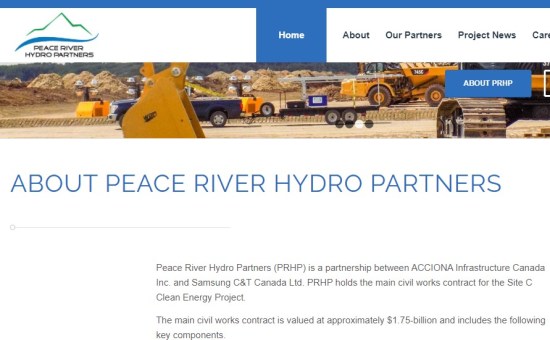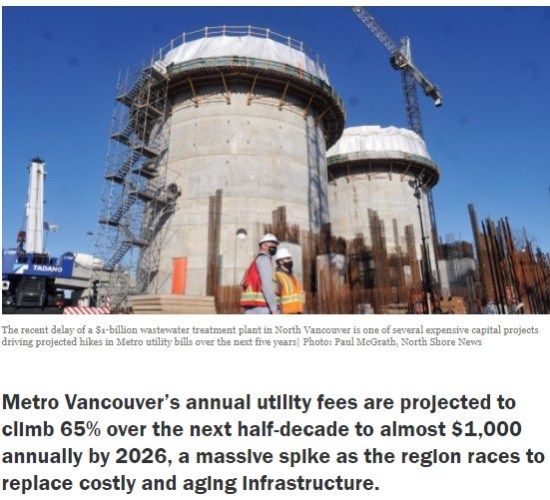
In mid-October 2021, Metro Vancouver terminated its contract with Acciona for construction of a waste water treatment plant in North Vancouver. The partially built project was originally planned to be complete by 2020 and its price tag had soared beyond $1 billion from the original budget of $700 million. Acciona called the cancellation regrettable and unnecessary.
Metro Vancouver’s action came weeks after it was reported that Accionna appeared to have abandoned work on the site:
An international construction company building the $1-billion wastewater treatment plant in North Vancouver has all but “abandoned” the project, according to Metro Vancouver.
“It appears to Metro Vancouver that Acciona has abandoned the project,” Jerry Dobrovolny, Metro Vancouver’s commissioner and chief administrative officer, said by email.
“Given they are years behind schedule for this project, we had expected them to be increasing their efforts on site, not reducing them.”
[Contractor] AWS is part of Acciona, a Spanish multinational based near Madrid that specializes in building infrastructure and renewable energy.

More than two years before, North Vancouver District issued a temporary stop-work order on the project because Acciona was not complying with building code requirements.
Acciona is part of Peace River Hydro Partners, which was awarded a $1.75 billion contract for civil works at Site C.

Although the Site C project is delayed and over budget, and at least four years from completion, BC Hydro’s FIA reports indicate PRHP has already been paid $2.5 billion. The overall budget has doubled so it is a safe guess to assume that Acciona’s take will be far more than the amount originally contracted.
This was predictable.
Bent Flyvbjerg of Oxford University is the most cited scholar in the world in megaproject management. One of his studies included this:
Underestimation cannot be explained by error and is best explained by strategic misrepresentation, that is, lying. The policy implications are clear: legislators, administrators, investors, media representatives, and members of the public who value honest numbers should not trust cost estimates and cost-benefit analyses produced by project promoters and their analysts.
Andrew Pyke’s review of Flyvbjerg’s The Oxford Handbook of Megaproject Management:
The global megaproject market is estimated at US$ 6–9 trillion per year, or approximately 8% of total global gross domestic product. Flyvbjerg discusses his ‘megaprojects paradox’, where, on one side of the paradox, megaprojects as a delivery model for public and private ventures have never been more in demand, and the size and frequency of megaprojects have never been larger. On the other side, performance in megaproject management is strikingly poor and has not improved for the 90-year period for which comparable data are available...
Somewhat amusingly, the book examines ‘the four sublimes’ that drive megaproject management, including technological, policital, economic and aesthetic ‘rapture’. In something readers will immediately recognise, the book points out that ‘Front-end planning is [usually] rushed and deficient, bad projects are not stopped, implementation phases and delays are long, costs soar, and benefits and revenue realisation diminishes and recedes into the future.’. In the case of megaprojects, ‘all you do when you hit the ground running, is fall.’
Acciona ranks with SNC-Lavalin as a favoured contractor for public projects in British Columbia government. The Spanish company is now contracted for other BC megaprojects, including the $2 billion(↑) Broadway subway and the $1 billion(↑) Pattullo Bridge. The chance of those projects being delivered on-time and on-budget can be safely established at zero.
One is left to wonder why senior public officials do repeat business with global companies that have a history of delivering not on-time and not on-budget.
Perhaps there are reasons not immediately apparent to the public.
In 2013, the World Bank banned SNC-Lavalin and its subsidiaries because of bribery schemes involving the company. In 2019, the World Bank found “Acciona engaged in corrupt, collusive, and fraudulent conduct” to secure a contract to supervise World Bank-financed infrastructure projects.
A Business in Vancouver (BIV) article shows why multi-billion boondoggles matter to everyone. Utility fees charged by local governments extract cash directly from the accounts of local businesses and residents, whether homeowners or renters.
Metro Vancouver utility fees could spike to almost $1,000 by 2026

Categories: Budget & Estimate Disasters





No fraud auditing then its a –
breach of a public trust
breach of fiduciary duty
unethical due to a
lack of moral authority.?
LikeLike
I’m sure you have noted many times in the years since the Liberals decided to go backwards with Site C and the NDP jumped on the same slow boat, there is no responsible party anywhere in the projects oversight and construction. Each engineering review is qualified with the announcements that the reviewers don’t accept any responsibility because they used BC Hydros information to determine whether or not BC Hydro knew what they were doing. And coincidentally they all gave that information a green light.
The most apparent condition of mega projects that leads to corruption, delays, cost over runs, has got to just be the scale of funds available for skimming. When Horgan approved 10.5 Billion I figured that it could go to 14- 15 Billion. Now its over budget at $16,000,000,000.00 with no top limit in sight. Petrowest, the Alberta oilfield company that got hundreds of millions out of BC Hydro, as one of the original partners with Acciona and Samsung, just to go bankrupt and walk away from this turkey, were probably the most honest of the crew.
LikeLike
“strategic lying” oh that is a great line!
Why does B.C. continue with hiring the same companies which rip off tax payers? They can’t all be that stupid. Of course today, RossK at The Gazetteer informs us Canada is ranked 19th in the world for laundering money. Perhaps there is a connection or not.
Having been interested in money laundering or hiding it this is a great scheme. Wonder if any one has done a deep dive on this company such as who are the B. of D. and what are their bank accounts like. do any of them turn up in the Panama Papers or the Pandora Papers or are they smarter than that and use other methods.
It is interesting that the project wasn’t investigated by fraud departments in the RCMP whenf N. Vancouver placed a stop work order on the project. As to why various levels of government and Crown corporations continue to use the same “crooked” companies, they’re lazy, stupid, easily flattered, and don’t know any better.
Our health care system and the workers are buckling under the work load and stress of COVID and we sure could use more beds and staff, but apparently there isn’t enough money for that, yet here we are paying hundreds of millions/billions to corporations who aren’t delivering. some thing really is wrong here.
It is doubtful either of the major parties in B.C. are going to deal with the issue because they’ve both “used” the services of these companies. It really boggles the mind.
it always amazes me at some level that governments will nickel and dime over the small things, but the mega projects, hell just spend the money who cares.
Makes me wonder who was “watching” over this waste water build? Have they been fired? Most likely not. It is time for politicians to stop looking at this projects as “too big to fail”. They have failed, now deal with it.
LikeLike
At least Metro Vancouver said, “Stop! You’re out of here.”
In countless other examples in BC, governments have said, “You want more money? No problem.”
LikeLike
B.C. Public Accounts show Acciona Facility Services Canada Limited was paid $540 thousand in fiscal year 2020-21. The company provides cleaning services.
AIM Roads (Acciona Infrastructure Maintenance) appeared first in 2019-20 Public Accounts. They’ve been paid $95 million by the B.C. government.
When governments employ foreign based conglomerates to do capital works, and now basic services like janitorial and road maintenance, they are facilitating schemes of tax evasion and avoidance like those revealed by the International Consortium of Investigative Journalists.
https://www.icij.org/
LikeLike
When it needed a bridge, Edmonton did things differently. The contract cost Acciona a bundle when they didn’t live up to requirements.
Of course, the bridge was more than two years late but the contract had penalties built in.
“Acciona-Pacer Joint Venture (APJV) is responsible for full project delivery risk, including cost and schedule, and is contractually committed to completing the project at the contracted stipulated sum,” said city spokesperson Kelly FitzGibbon.
https://globalnews.ca/news/3722954/walterdale-bridge-contractor-could-face-10-5m-in-late-fines
One reason that large companies employ politically connected lobbyists is to convince government leaders to have taxpayers cover full project delivery risks.
LikeLike
One might wonder if the $601.0 million Golden Canyon Highway Construction will come in on time and on budget?
And how they are able to pinpoint the price with such accuracy on a project fraught with so many intangibles, unknowns and certain changes? Dollars to donuts it won’t come in at $601,000,000!
LikeLiked by 1 person
In the early eighties I can not remember which company it was (Dominion Construction or Commonwealth Construction) bid on the building of BC Place, their contract was set up that if there was cost over runs the money came out of their pocket. Thus BC Place was built on time and on budget. Why can we not negotiate all contracts this way?
LikeLike
Ah, er, no. BC Place Stadium roof upgrade: 514% of initial estimate Manager Judy Rogers pegged the total cost at just $100 million. It ended up at $514 million.
Burnt into memory, Gordon Campbell thundering like an evangelist it would “cost $100 Million and not a penny more,” BC media, the BCLibCon press release team, loved that clip.. but ‘lost’ it after the massive overruns.
LikeLike
Oops, mea culpa. obviously misread… better go get a 2nd cup of coffee. So used to BCLib govt overruns…
LikeLiked by 1 person
Dillingham Construction built BC Place in its original form for about $300 million. It opened in 1983, seating more than 60,000. Bruce White was referring to the way business was done forty years ago.
The roof upgrade and renovations were completed ten years ago. Seating was reduced to 54,500 but today’s main tenants, Lions and Whitecaps, would be thrilled to have 15,000 in the stadium.
LikeLiked by 1 person
Mega projects makes the world go round and round…….
My take on a mega project. In today’s world outright bribery and political favouritism is somewhat hard to do (unless you are laundering money in a BC Casino) so the new format is the over priced and next to useless “Mega Project”.
Mega projects are an excellent way to give your political friends truckloads of the public’s money and without much public or media scrutiny because it is a mega project and everyone loves a mega project.
Here are a few very questionable mega projects in BC,
Site C, $16 billion and counting.
Port Mann Bridge replacement- tore down a well built bridge and built a massive mega project instead.
BC Place – the public seldom diss sporting venues since the Roman times.
The Expo line- easily cost two times more than the LRT alternative, with less capacity and much higher maintenance and operating costs.
The Millennium Line – See above, So expensive than the previous LRT planning it had to be built in two sections with the Evergreen Line being the second section.
The Canada Line – A financial tool to enrich SNC Lavalin and the Quebec Caisse, leaving the public with an grossly under built light metro system which cost far more to build than a simple streetcar with a higher capacity.
And the list goes on.
Near future mega projects.
The Massey tunnel replacement a now $4 billion replacement for a perfectly good tunnel, which will move gridlock and congestion about 4 km.
The Broadway Subway – This $3 billion project, despite the media hype will replace the B-99 bus from commercial to Arbutus, which today has a maximum capacity of 2,000 pphpd or about the eighth of the ridership needed to justify a subway. Will not take a car off the road.
The Expo Line extension to Langley – This now $4 billion plus mega project will cater to a transit route which has a maximum traffic flow of about 1,000 pphpd.
The list goes on and on.
In BC, the taxpayer is forced to spend 2 to 3 times more for a projects, so it can be a mega projects which in the end benefits politicians with photo-ops and the favourite contractors, sadly the taxpayer, not so much.
LikeLiked by 1 person